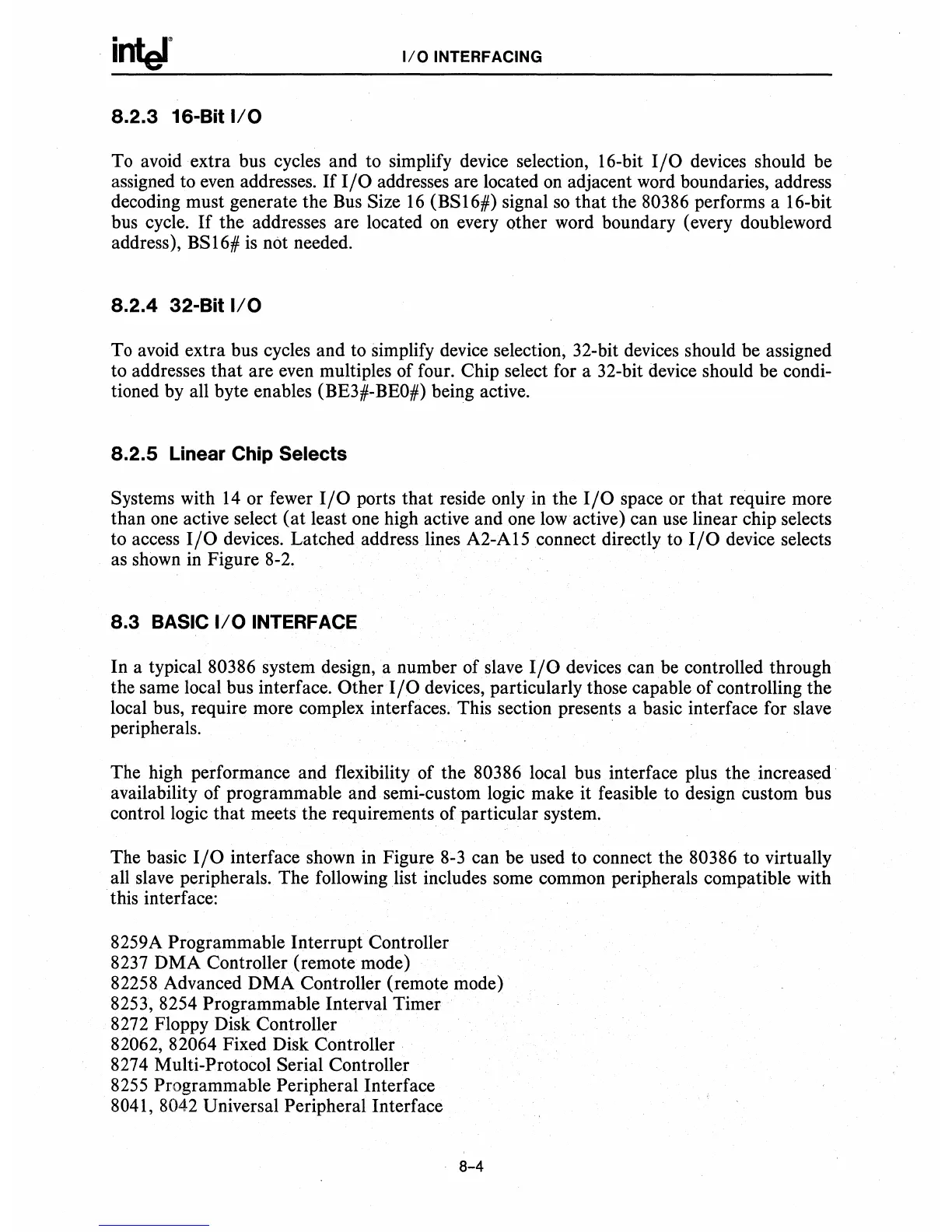1/0
INTERFACING
8.2.3 16-Bit
1/0
To
avoid extra bus cycles and to simplify device selection, 16-bit
I/O
devices should be
assigned to
even
addresses.
If
I/O
addresses are located
on
adjacent word boundaries, address
decoding must generate the
Bus
Size
16
(BSI6#) signal
so
that the 80386 performs a 16-bit
bus cycle.
If
the addresses are located
on
every other word boundary (every doubleword
address),
BS
16#
is
not needed.
8.2.4
32-Bit 110
To
avoid extra bus cycles and to simplify device selection, 32-bit devices should be assigned
to addresses that are even multiples of four. Chip select for a 32-bit device should be
condi-
tioned by all byte enables (BE3#-BEO#) being active.
8.2.5
Linear Chip Selects
Systems with
14
or fewer
I/O
ports that reside only
in
the
I/O
space or that require more
than one active select (at least one high active and one
low
active) can
use
linear chip selects
to access
I/O
devices. Latched address lines A2-A15 connect directly to
I/O
device selects
as
shown
in
Figure 8-2.
8.3
BASIC
110 INTERFACE
In a typical 80386 system design, a number of slave
I/O
devices can be controlled through
the same local bus interface. Other
I/O
devices, particularly those capable of controlling the
local bus, require more complex interfaces. This section presents a basic interface for slave
peripherals.
.
The high performance and flexibility of the 80386 local bus interface plus the increased
availability of programmable and semi-custom logic make it feasible to design custom bus
control logic that meets the requirements of particular system.
The basic
I/O
interface shown in Figure
8-3
can be used to connect the 80386 to virtually
all slave peripherals. The following list includes some common peripherals compatible with
this interface:
8259A Programmable Interrupt Controller
8237 DMA Controller (remote mode)
82258 Advanced DMA Controller (remote mode)
8253, 8254 Programmable Interval Timer
8272 Floppy Disk Controller
82062, 82064 Fixed Disk Controller
8274 Multi-Protocol Serial Controller
8255
Programmable Peripheral Interface
8041, 8042 Universal Peripheral Interface
8-4

